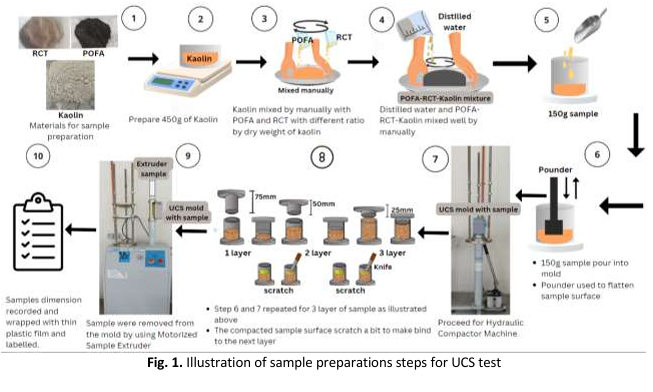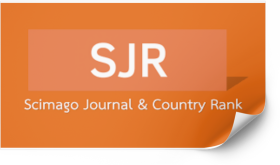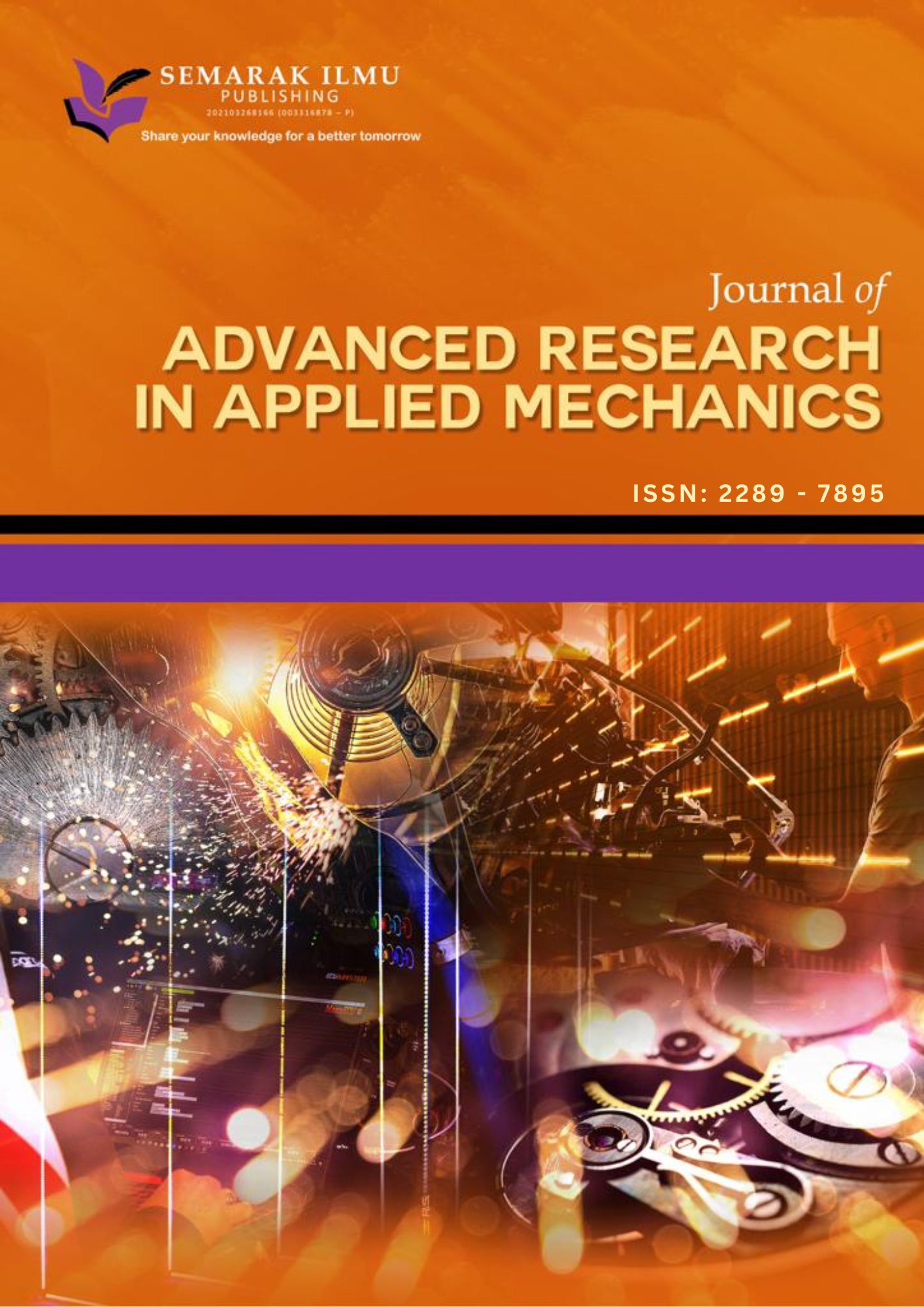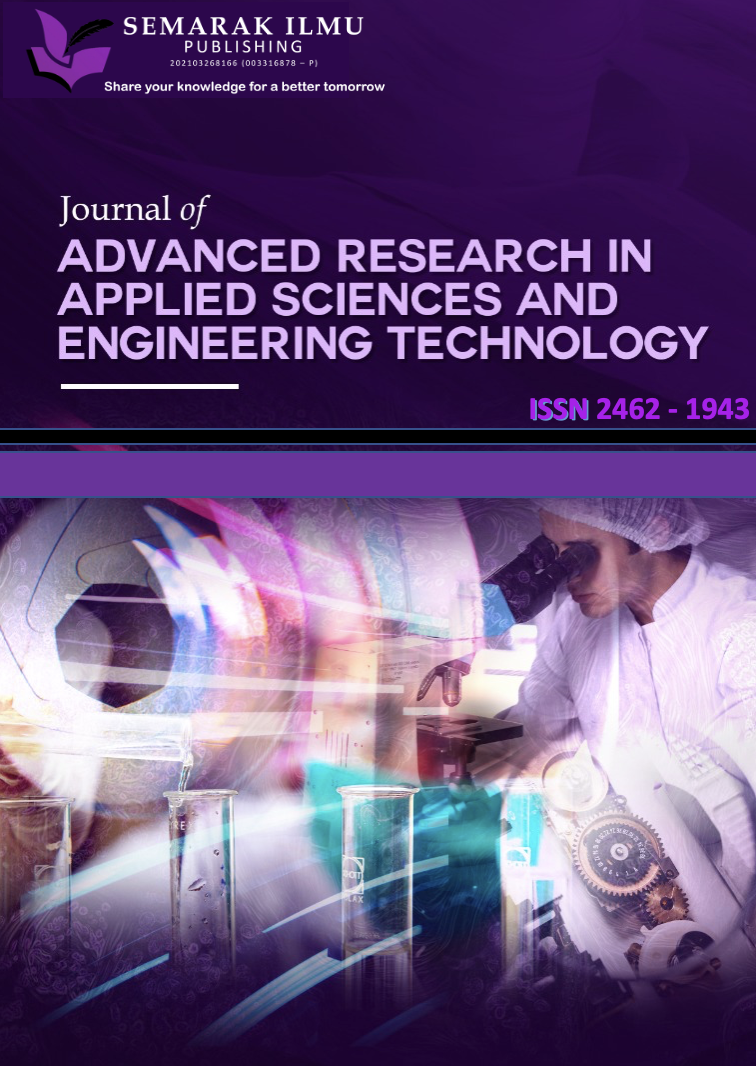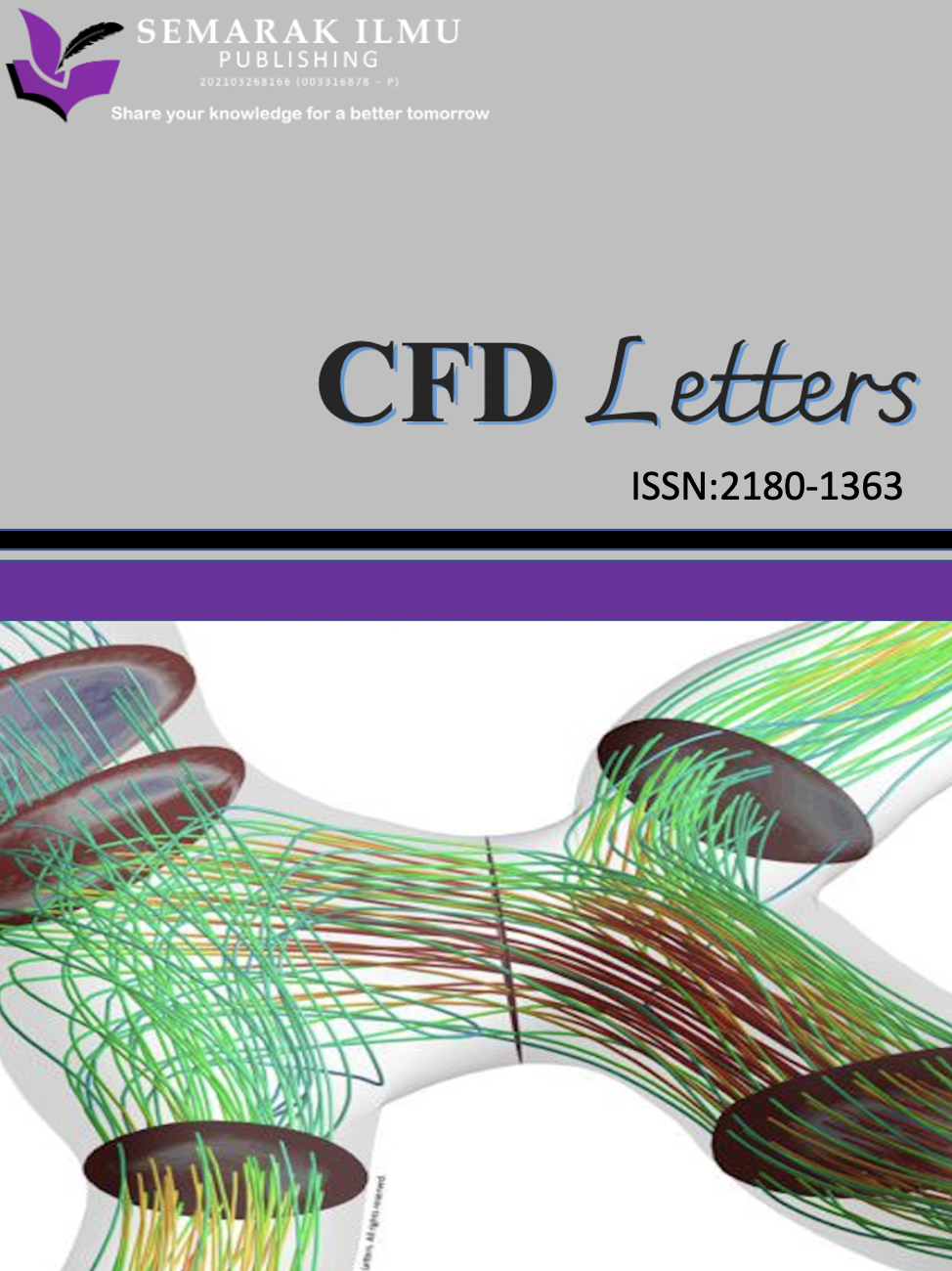Strength Development of Soil Stabilised with POFA-RCT Binder
DOI:
https://doi.org/10.37934/ard.134.1.7787Keywords:
soil binder, palm oil fuel ash (POFA), recycled ceramic tile (RCT), unconfined compressive strength (UCS)Abstract
Soil stabilisation is a critical facet of civil engineering, involving the modification of soil properties for enhanced engineering characteristics. Traditional binders commonly used for soil stabilisation, such as cement and lime, have well-known adverse environmental impacts. Their production process consumes substantial energy and release greenhouse gases that contribute to air pollution and climate change. Ordinary Portland Cement, responsible for over 4.1 billion tonnes annually, contributes to 8% of global CO2 emissions. This study delved into formulating an innovative soil binder utilising 80% palm oil fuel ash (POFA) and 20% recycled ceramic tile (RCT) to optimise soil stabilisation. The integration of by-products in soil stabilisation gains prominence due to cost-effectiveness, resource conservation, improved performance and environmental benefits. This study also assessed the effectiveness and performance of soil stabilised with various dosages of POFA-RCT binder (3, 6, 9, 12 and 15%) cured for 1, 7, 14 and 28 days, focusing on strength development. The chemical composition of the stabilised soil was analysed through x-ray fluorescence (XRF). POFA was found to consist primarily of silica, while RCT contained calcium and silica, where both exhibited pozzolanic characteristics. Unconfined compression strength (UCS) test was conducted to assess the strength development of stabilised soil with POFA-RCT binder. The results of this study revealed that the optimum blend of POFA-RCT ratio was 80:20, with the ideal dosage of 15% at 28 days of curing. These findings underscored the potential of POFA-RCT binder in enhancing soil strength and durability, emphasising its applicability in sustainable construction practices. By employing by-product materials as an alternative soil binder, this study aligns with Sustainable Development Goals 9, 12, 13 and 15, promoting economically and environmentally sustainable practices in the construction industry through the utilisation of local resources and waste materials.
Downloads
